Camping with Pets
Your pet will need a secure place to sleep, the right type of food, and plenty of water. Remembering to pack the essentials, such as a leash, bowls, and waste bags, will help keep your trip organized and enjoyable for everyone.
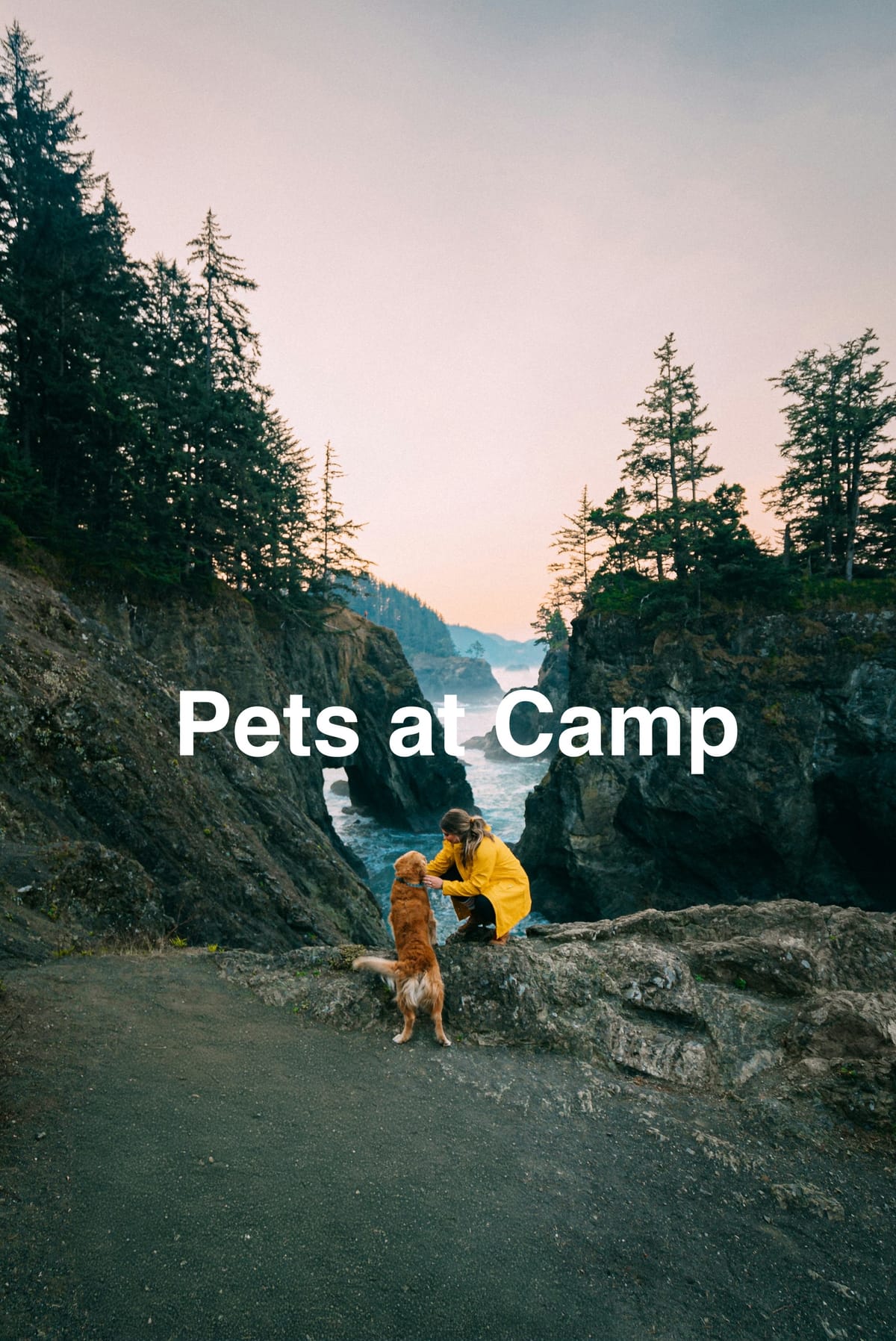
Camping is a great way to enjoy nature. Bringing your pets along can make the experience even more rewarding.
Preparing for a camping trip with pets requires attention to detail to ensure their comfort and safety.
While camping with pets, maintaining their health is paramount.
It means checking them daily for ticks, keeping them hydrated, and ensuring they don't eat something harmful.
Training is also crucial for the safety of your pet and others.
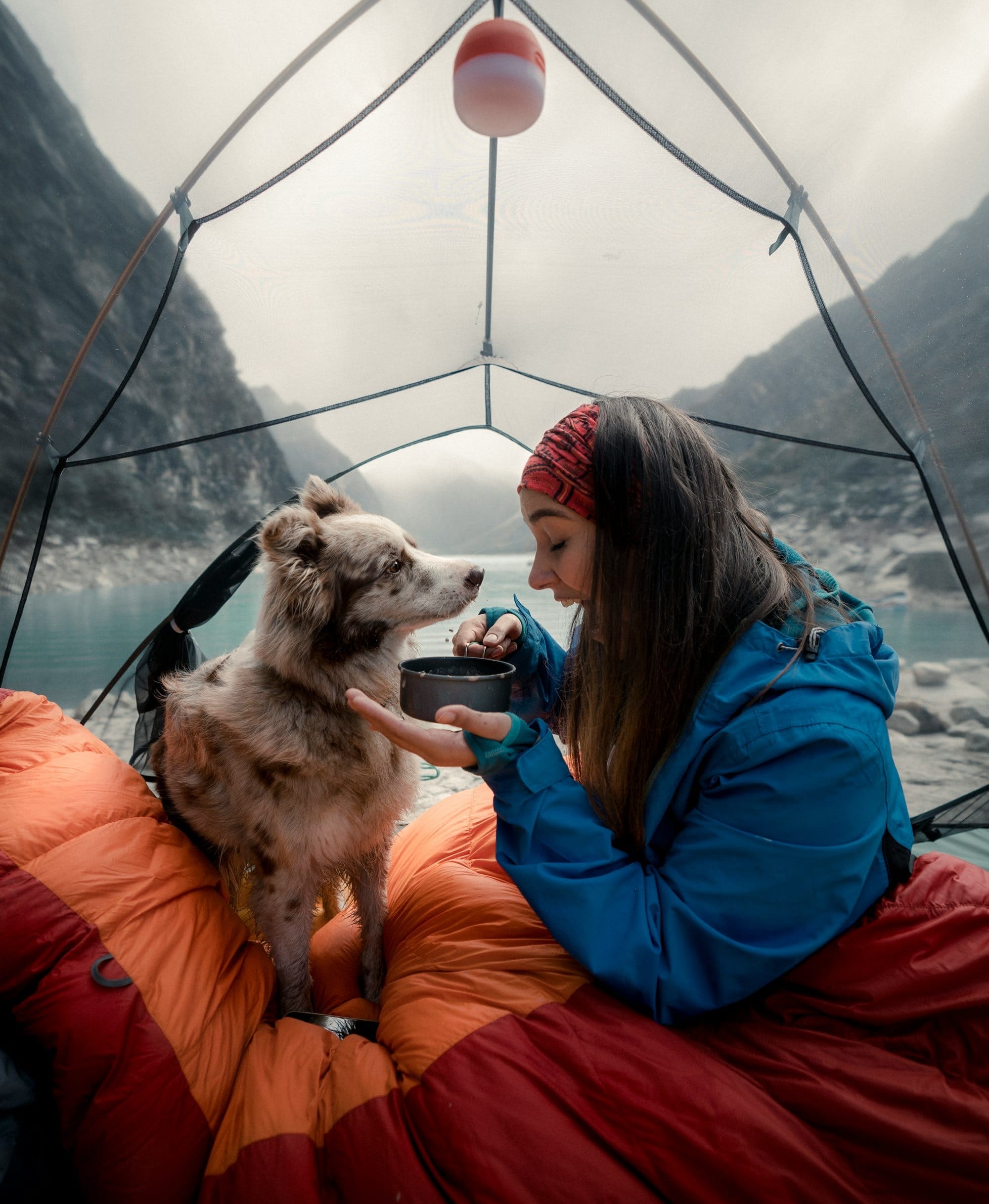
Good behavior, like responding to commands and staying calm around other campers and wildlife, will contribute to a successful and stress-free outing.
Key Takeaways
- Pack appropriate gear and essentials for your pet.
- Focus on your pet's health and safety throughout the trip.
- Train your pet for good behavior in different camping situations.
Planning Your Camping Trip
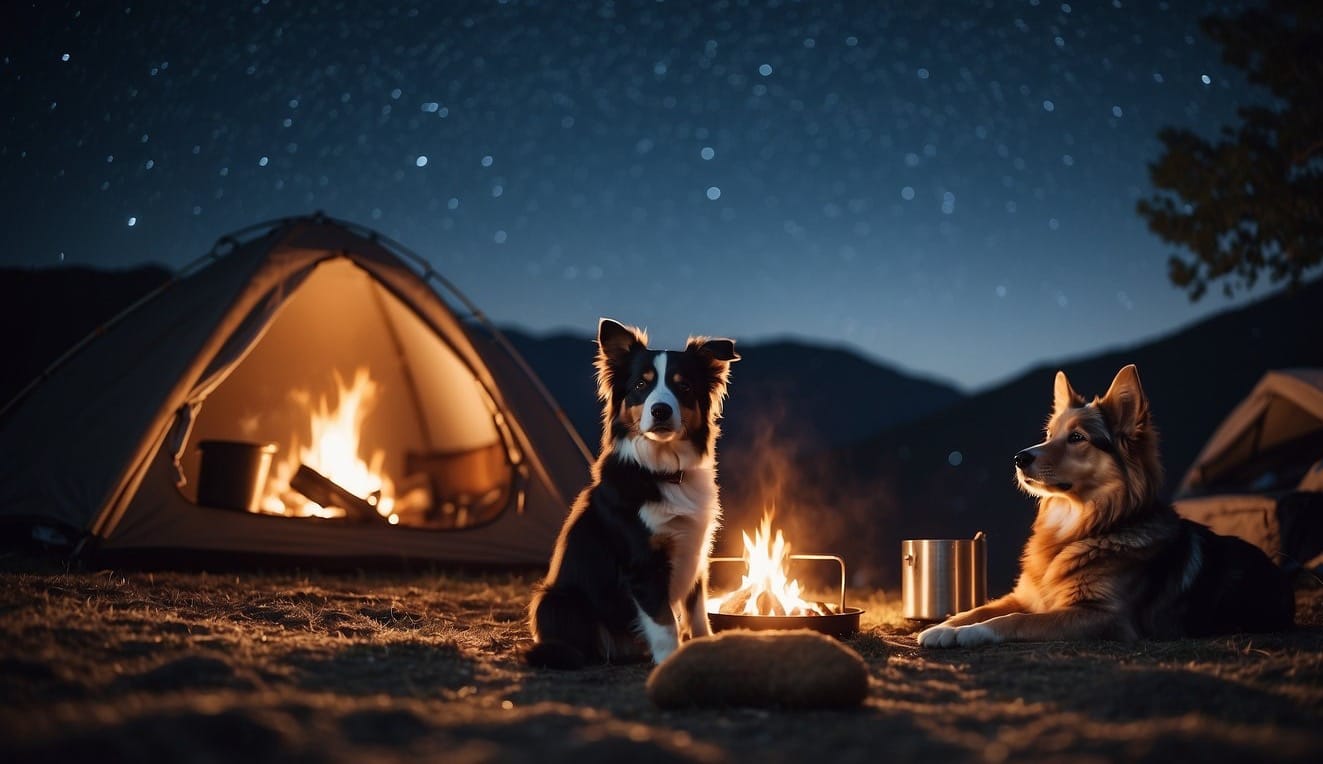
When embarking on a camping trip with your pet, careful consideration should be directed toward choosing a pet-friendly destination, understanding and adhering to leash laws, preparing your pet for outdoor activities, and packing the right gear for both comfort and safety.
Choosing the Right Destination
Researching pet-friendly campgrounds and national parks that accommodate animals is critical.
Look for campsites with amenities for pets, checking whether they have nearby trails suitable for animals.
Your choice of destination will heavily influence the success of your trip.
- Pet-Friendly Campgrounds: Ensure the campsite permits pets.
- National Parks: Check restrictions as some parks may not allow pets on trails.
- Environment: Consider whether your pet can handle the terrain and climate.
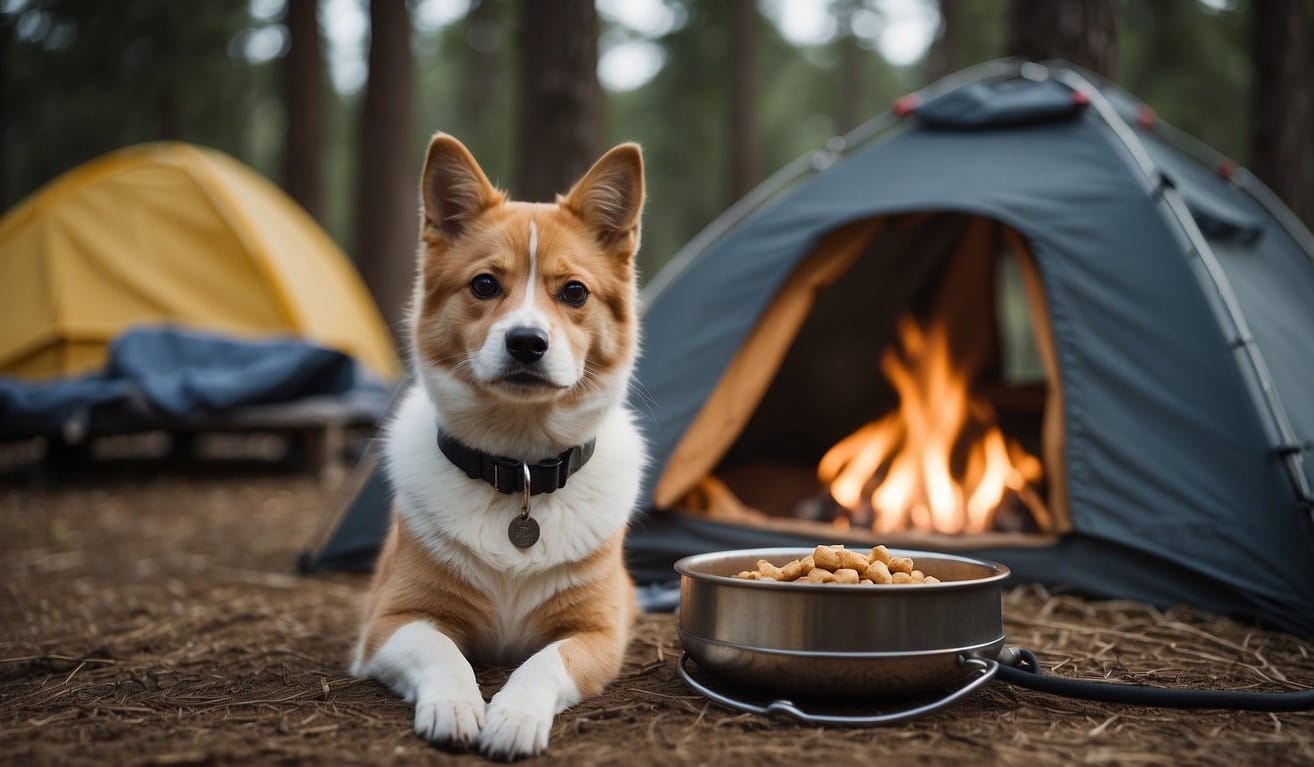
Understanding Leash Requirements
Leash laws can vary from one place to another. Always check the leash requirements of your destination to ensure compliance with local regulations.
- On-Leash Areas: Most sites require pets to be on a leash at all times.
- Leash Length: Typically, leashes should not exceed six feet in length.
- Off-Leash Recreation: Some destinations have designated areas where pets can roam freely.
Preparing Your Pet for the Adventure
It's important to prepare your pet for the outdoor experience. Here are some steps you should take:
- Health Check: Visit your vet to ensure your pet is healthy and up-to-date on vaccinations.
- Identification: Make sure your pet has a collar with ID tags and consider microchipping for extra security.
- Familiarization: Expose your pet to similar outdoor scenarios at home, such as setting up a tent to get them used to new environments.
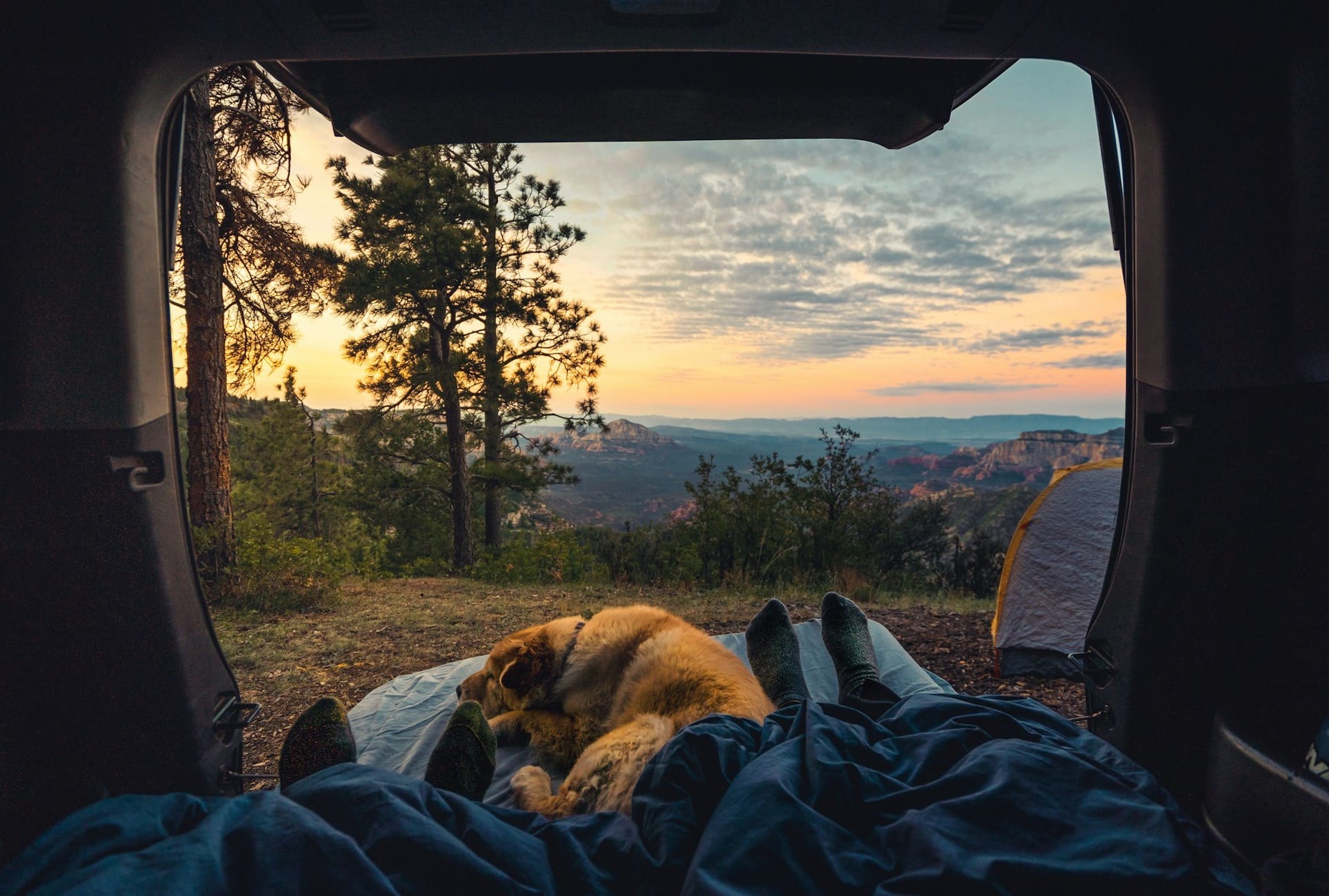
What to Pack
Packing the right supplies will make your camping trip with your dog more enjoyable and comfortable.
- Food and Water: Bring enough pet food and a collapsible water bowl.
- First-Aid Kit: Include pet-specific items in case of any injuries.
- Waste Bags: Always clean up after your pet.
- Sleeping Gear: A pet bed or blanket to keep them warm at night.
- Toys: To keep your pet entertained and engaged while at the campsite.
Camping Gear for Pets
When heading out to camp with your furry friend, it's crucial to pack the right equipment.
This includes essentials for safety, comfort for sleeping, and navigation tools to ensure you and your pet can enjoy the great outdoors worry-free.

Essential Dog Camping Gear
- Leash: Always bring a sturdy leash to keep your dog close and safe.
- First Aid Kit: Include pet-specific items like tick removers and paw protectors.
Packing List Example:
| Item | Description |
|---|---|
| Leash and Collar | For control and identification |
| Food and Water | Bowls plus a supply of fresh water and food |
| Waste Bags | To clean up after your pet |
| First Aid Kit | For any emergencies that may arise |
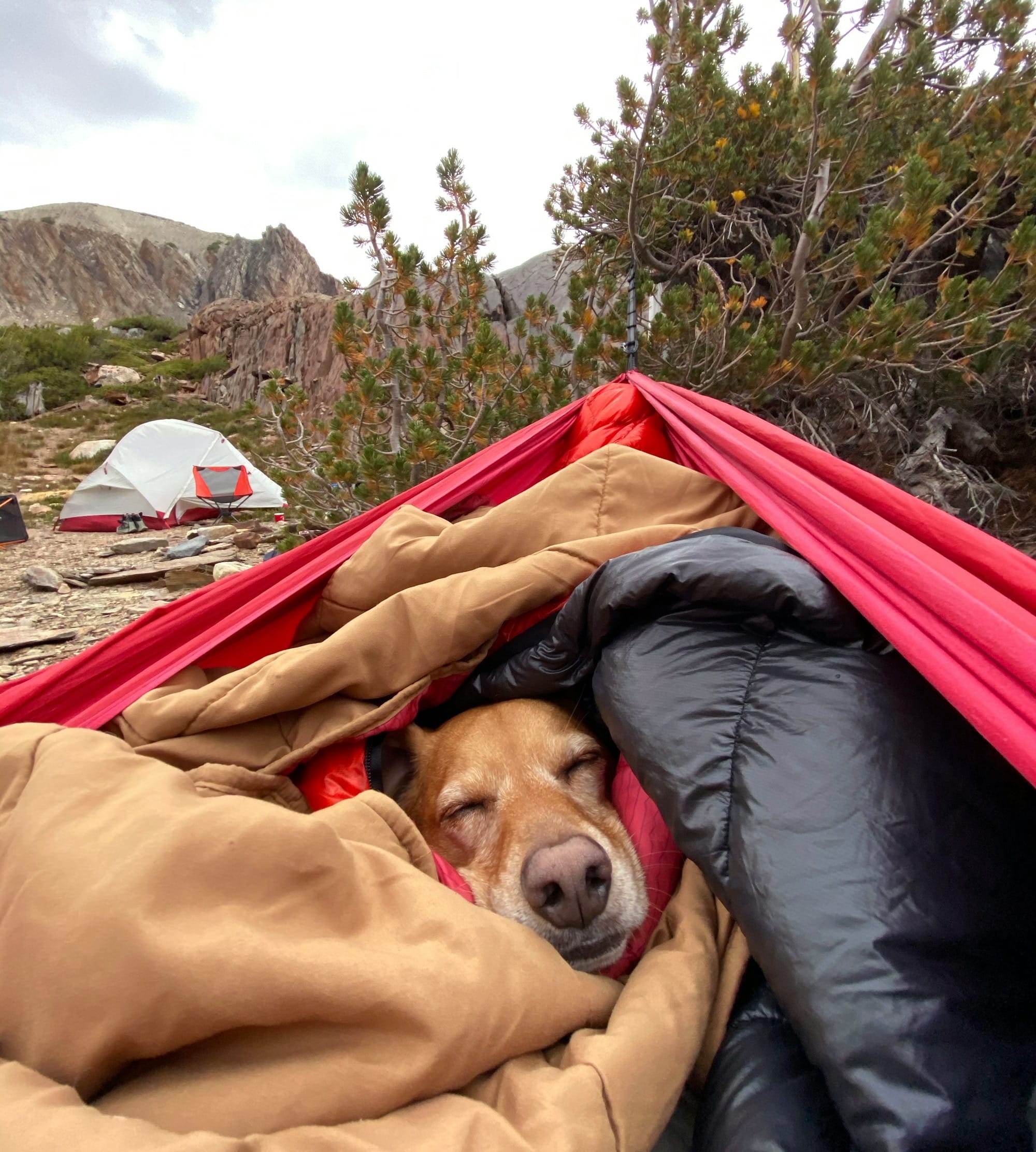
Comfort Items for a Good Night's Sleep
- Dog Bed: A portable, comfortable dog bed like the Kurgo Wander Loft Travel Bed keeps your dog warm and cozy.
- Sleeping Gear: Ensure the sleeping gear is soft, fluffy, and suited for the weather—cooling mats for summer, insulated beds for colder nights.
Safety and Navigation Tools
- Lighting: A doggy-safe light can keep your pet visible at night.
- Ruffwear: Brands like Ruffwear offer gear such as protective boots and reflective harnesses for rough terrain and low-light conditions.
- Navigation Aids: Consider a GPS tracker in case your dog wanders off.
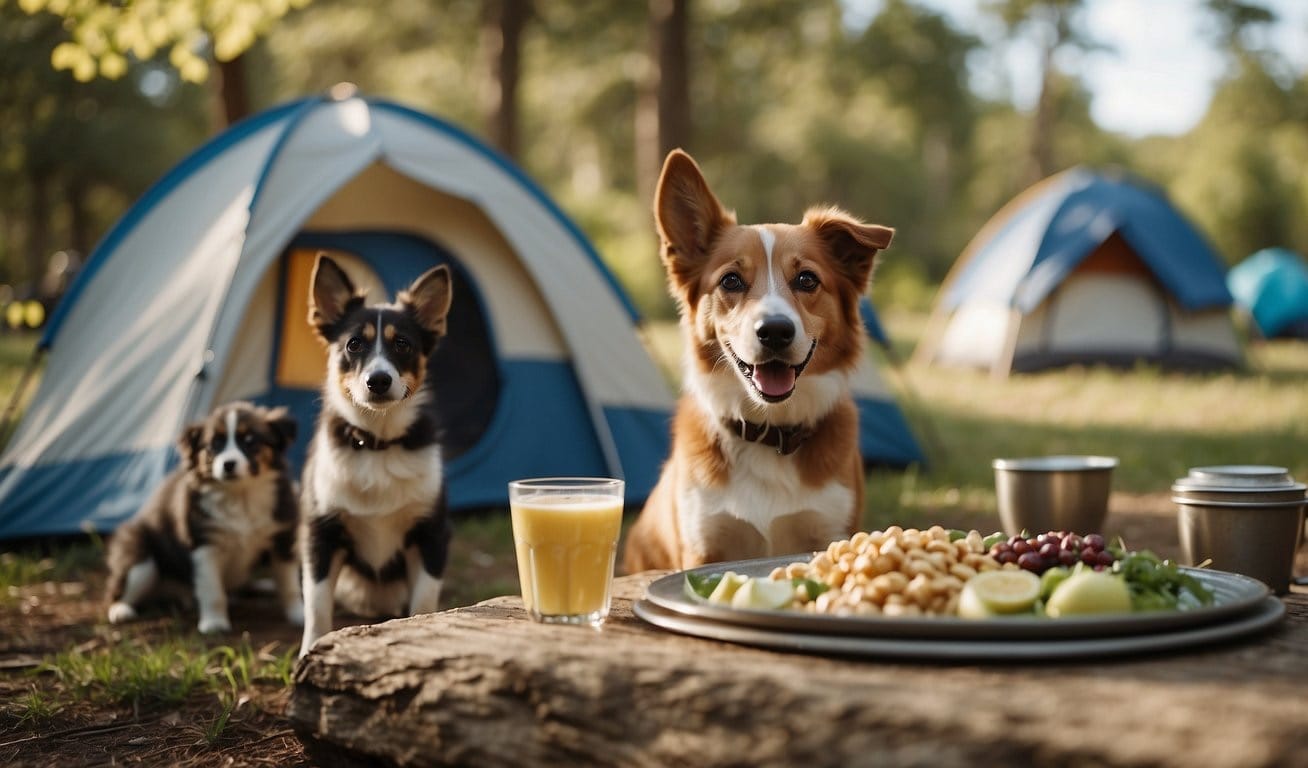
Feeding and Hydration
When camping with your pet, maintaining their energy levels and ensuring they stay healthy involves the right food and plenty of water.
Here’s how you can manage their meals and water needs effectively.
Dog Food and Treats for Energy
Choose high-quality dog food that provides the energy your dog needs for camping activities.
A mix of dry kibble and wet food is ideal, alternating between meals to keep your dog interested.
Pack enough dog food for each day of the trip plus a little extra in case of emergencies. For ease and convenience, measure out each meal into separate bags before you leave.
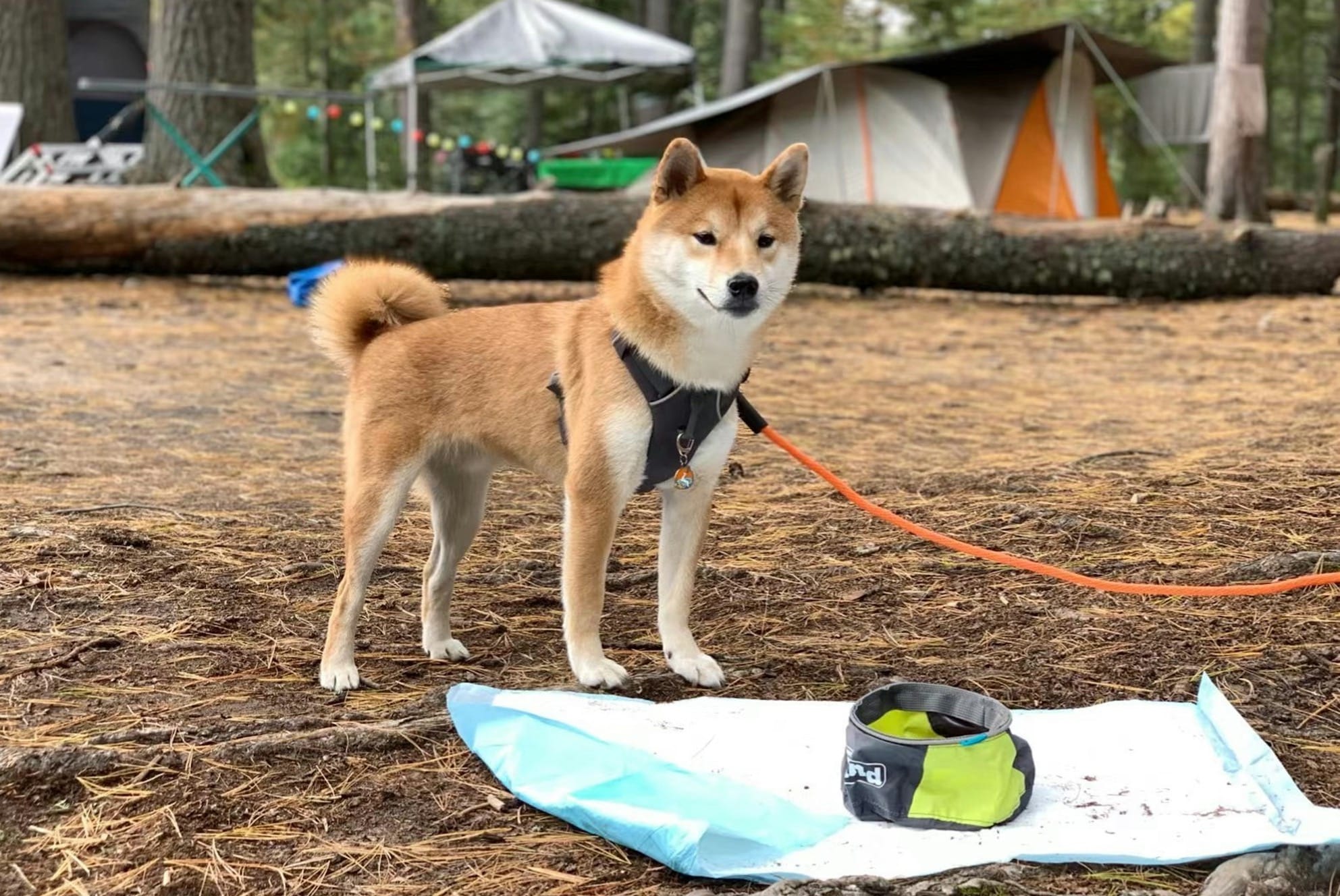
For treats, bring items that can double as energy boosters and rewards for good behavior.
Avoid giving your dog new treats that might upset their stomach during the trip. Here's a simple guide:
- Morning: Give dry food; it’s less likely to spoil and provides lasting energy.
- Evening: After an active day, wet food can help with hydration and is often more appetizing.
- Treats: Use them for energy boosts during hikes or as rewards. Small, chewy snacks are easy to carry.
Maintaining Hydration and Health
Throughout the trip, your dog must have constant access to fresh water.
Bring along enough water for both you and your pet, plus a little extra. Water sources in the wild can contain bacteria or parasites, so it’s safer to use the water you bring.

Provide water to your pet using dishes or portable bowls. Collapsible bowls are great as they are lightweight and easy to pack.
Make sure to stop frequently for water breaks, especially if it’s hot or if you are doing a lot of exercises. Here's a quick checklist:
- Fresh water: Carry it for both you and your dog.
- Bowls: Use collapsible dishes for easy access to water.
- Schedule: Offer water at mealtimes and after any physical activity.
Keep a close eye on your dog for any signs of dehydration, such as excessive panting, dry gums, or lethargy.
If you notice any of these symptoms, make sure to offer water immediately and rest until they recover.
Pet Health and Safety
Ensuring the health and safety of your pet while camping requires attention to vaccinations, protection against fleas and ticks, and being prepared for emergencies.
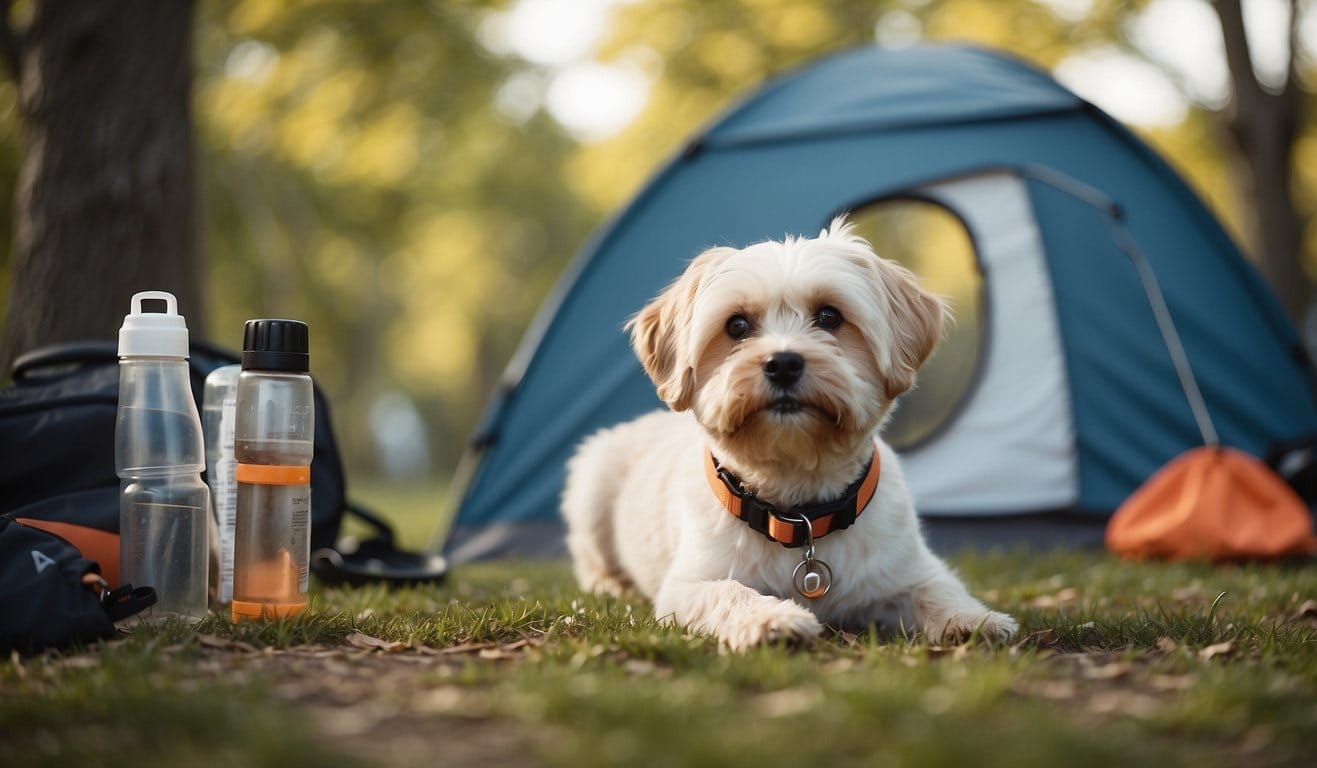
Vaccinations and Medical Records
Before heading out to camp, make sure your pet is up-to-date on all necessary vaccinations.
It’s a good idea to bring a copy of your pet’s medical records, which should include a record of recent shots.
This can be critical in case you have to visit a vet while you’re away from home.
- Vaccinations: Include core vaccines and any others recommended for the area.
- Microchipped: Confirm your pet is microchipped for identification.
- Medical Records: Keep a physical or digital copy easily accessible.
Preventing Fleas and Ticks
Fleas and ticks can pose a significant risk to your pet’s health while camping.
Use a reputable flea and tick prevention method, and regularly inspect your pet’s coat for these pests.
- Topical Treatments: Apply before your trip as directed.
- Collars: Consider a flea and tick collar for continued protection.
- Inspection: Check your pet daily, especially after trail walks.
First Aid and Emergency Preparedness
Having a pet first aid kit tailored for your pet can be a lifesaver during emergencies.
Ensure you know the basic first aid procedures, and have the contact information for the nearest animal hospital.
- First Aid Kit: Include bandages, tweezers, antiseptic, and your pet's medications.
- Emergency Contact: Have the number for animal poison control and local vet clinics.
- Plan: Know the nearest route to an animal hospital from your campsite.
Training and Behavior
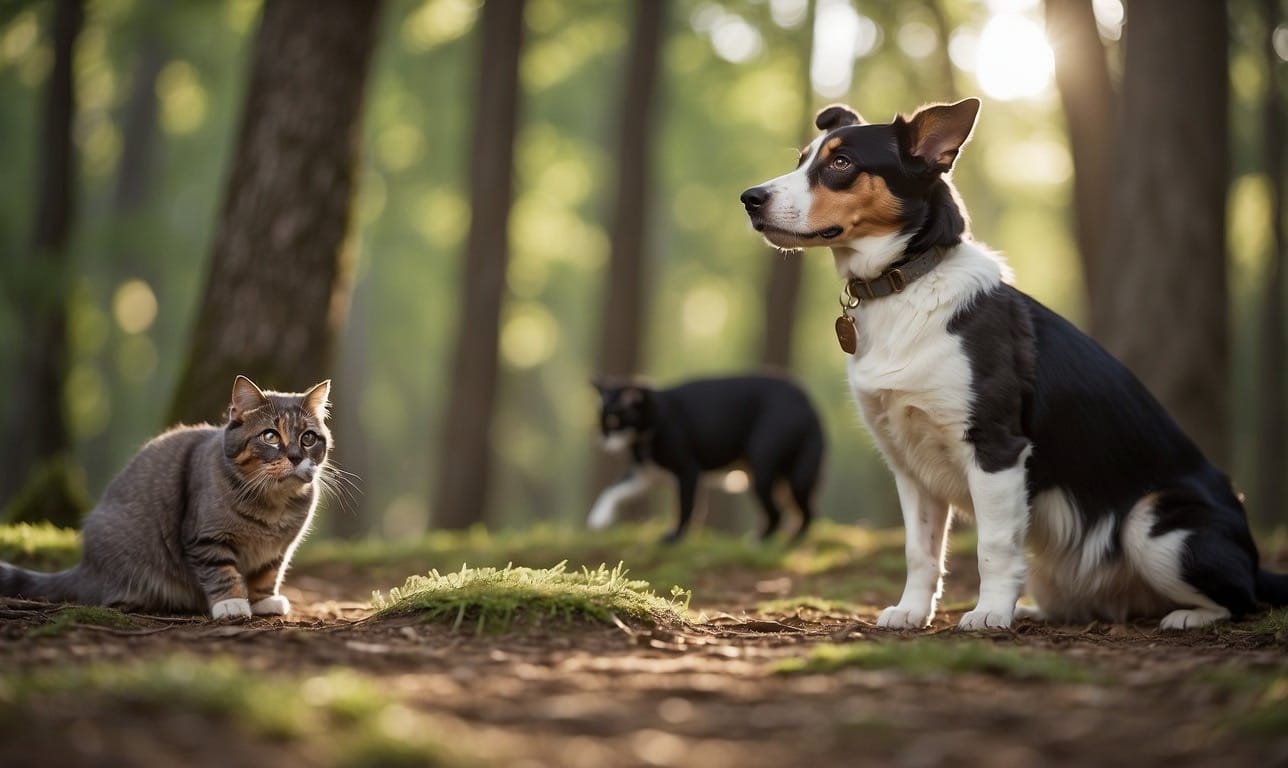
Proper training and understanding your dog’s behavior are crucial for a successful camping trip.
It ensures the safety and enjoyment of yourselves, your pet, and other campers.
Obedience Training for Camping
Before heading out, it's important to ensure your dog responds well to basic commands.
Behavior that's manageable at home can become problematic in nature’s unpredictable environment.
- Sit/Stay: This is essential for controlled situations, like during camp setup.
- Come: This keeps your dog from wandering too far away.
- Leave it: This prevents them from picking up or eating dangerous items.
Quiet hours in campgrounds are not just for people. Dogs must also adhere to these times.
Train your dog to respond to a command, which means to be quiet to avoid disturbances.
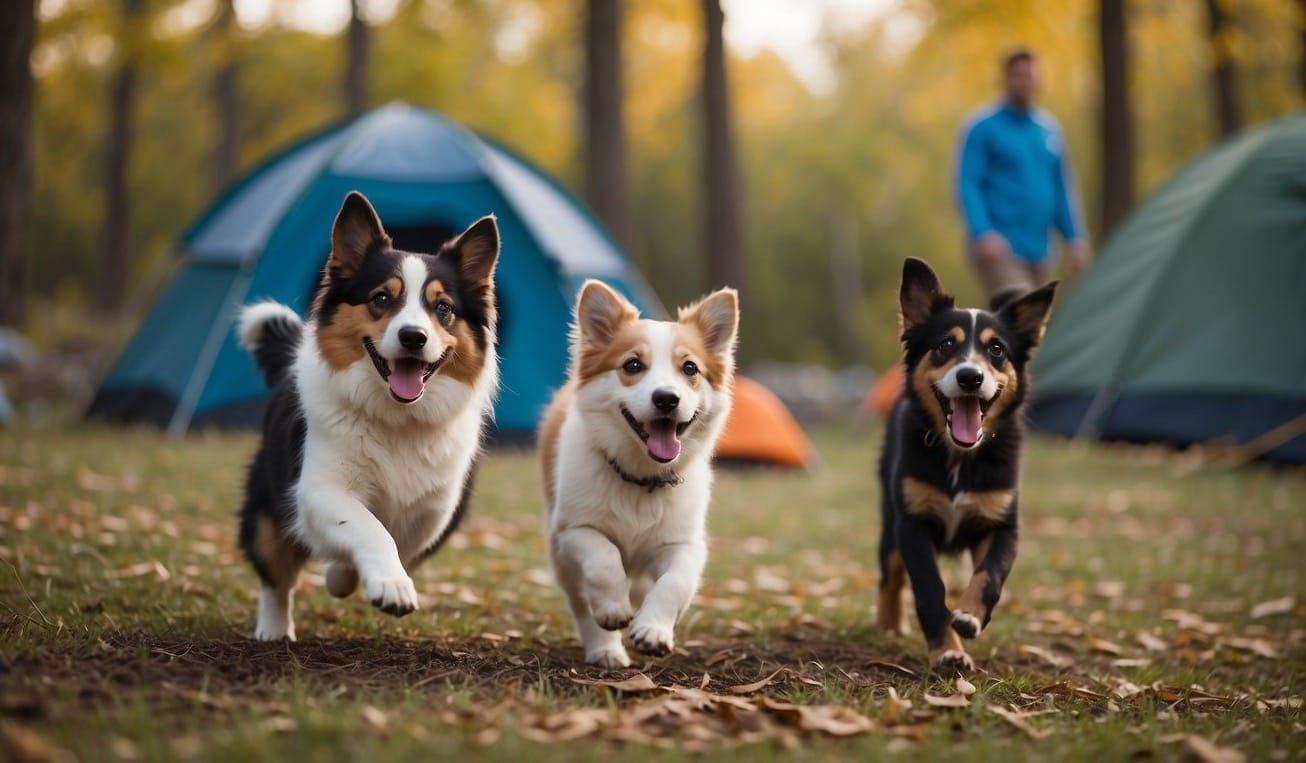
Managing Your Dog's Behavior in Nature
In nature, you need to be vigilant about your dog's interactions with wildlife and the surrounding environment.
- Leash Training: A reliable leash-trained dog is less likely to chase after wildlife or stray into others’ campsites.
- Wildlife Encounters: Teach your dog to be calm and not to bark or lunge at wildlife. This keeps everyone safe.
- Responsibility: Always monitor your dog’s behavior. Take quick corrective action if they dig, bark excessively, or exhibit signs of aggression.
Remember to always clean up after your dog to maintain the natural beauty of the campsite and practice responsible pet ownership.
Activities and Fun
Bringing your pet along on your camping trip opens up a world of adventure and bonding.
Here’s how you can make the most of the great outdoors, ensuring both fun and safety for your furry friend.
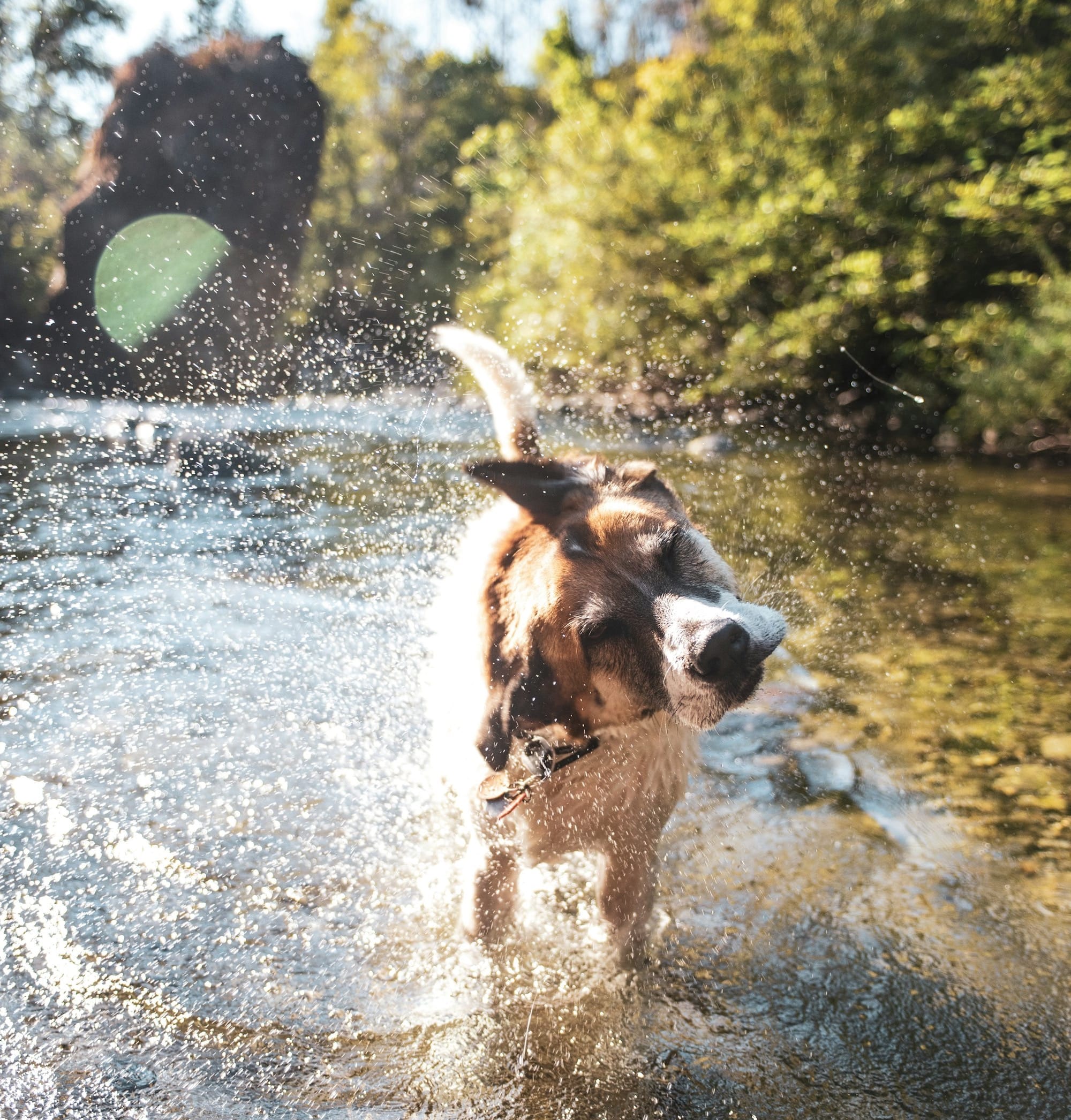
Hiking with Your Dog
When you set off on a hiking adventure with your dog, preparation is key.
- Pack Enough Water: Bring enough water for both you and your dog, especially on longer trails where streams may not be present.
- Check Your Dog's Fitness: Make sure to check your dog's fitness and start with a trail suited to their level.
- Stay on Pet-Friendly Trails: Always stay on pet-friendly trails, and keep your dog on a leash as required.
- Bring a Camera: Don't forget to capture the moment; bring a camera or your phone to snap a photo of your dog enjoying the natural surroundings.
Playing and Relaxing in the Great Outdoors
After an invigorating hike, ensure there's time for play and relaxation.
- Fun Playtime: Use outdoor-safe toys for a game of fetch or tug-of-war.
- Resting: It's also important for your pet to rest, especially if they're not used to the increased activity. Set up a comfortable spot in the shade where you and your dog can relax and enjoy the tranquility of nature.
Creating Lasting Memories
The great outdoors is an ideal setting for creating memorable experiences with your dog.
- Adventure: Whether it's trying out backpacking, running through open fields, or even climbing, make sure the activities are safe and suitable for your pet.
- Memories: Remember to take plenty of photos—these will be the memories you cherish for a lifetime.
Leave No Trace
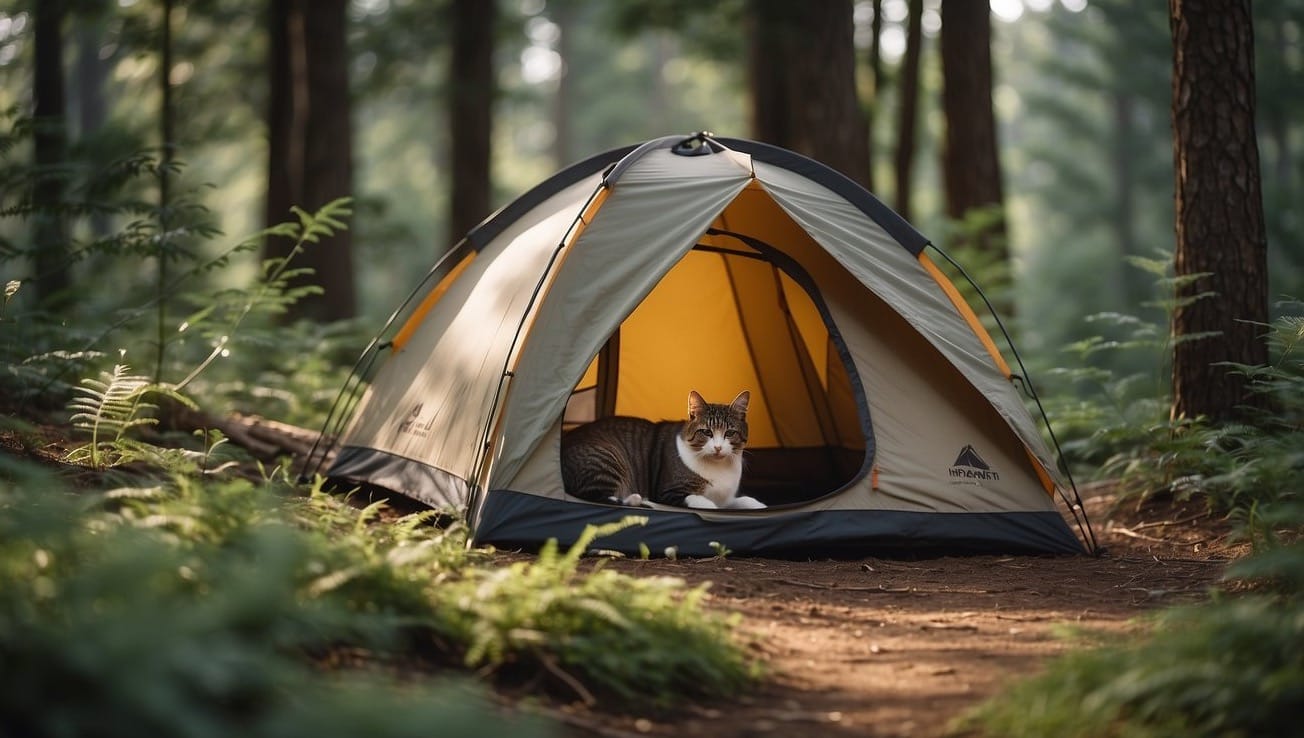
When you go camping with your pets, it's critical to minimize your impact on the natural environment. Ensure you manage waste properly and take responsibility for the surroundings.
Waste Management and Environmental Responsibility
Your duty to the environment includes handling your pet's waste in a responsible way.
- Always Carry Waste Bags: Always carry poop bags or waste bags to collect your dog's waste.
- Proper Disposal: Unlike at home, where you can dispose of waste in a bin, in the wild, you must pack it out.
- Disposing Waste: Avoid leaving bags on the trail, even if you plan to pick them up later.
- Burying Waste: In the absence of trash cans, and only as a last resort, bury the waste in a cat-hole at least 6 inches deep and 200 feet away from water sources.
While you are responsible for managing waste, also ensure your dog doesn't escape or cause disruptions in wildlife habitats.
- Unattended Dogs: Never leave your dog unattended. An unattended dog might chase wildlife, or forget its way.
- Escape-Proofing: Before setting up camp, make sure the area is escape-proof for your pet.
Post-Trip Care and Considerations
Taking care of your pet after a camping trip is essential to ensure their well-being and to reflect on the trip for future improvements.
Addressing both grooming and health checks, as well as learning from the experience, are crucial steps.
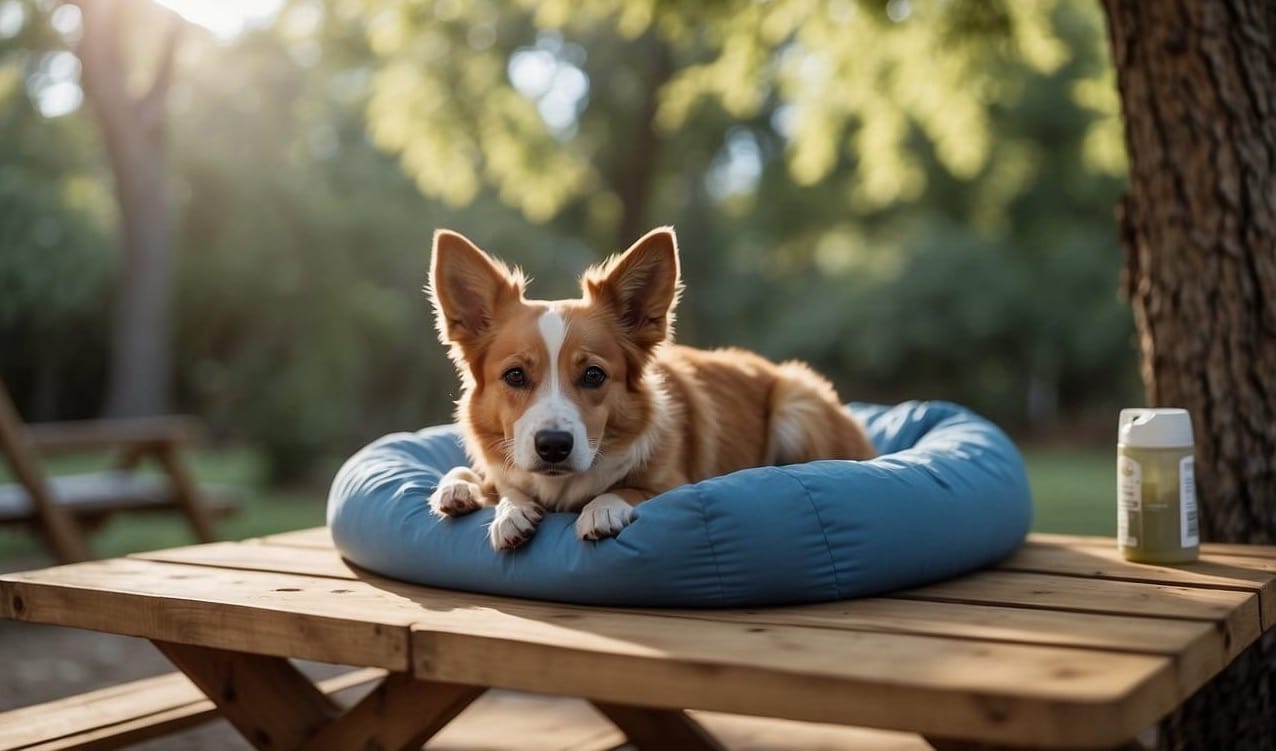
Post-Camping Grooming and Health Checks
Once you return home, promptly groom your pet. Brush their fur thoroughly to remove dirt, grass, and potential pests.
If you used a cooling vest or other gear, clean them according to manufacturer instructions.
Conduct a careful inspection of your pet's skin, paws, and coat for any signs of ticks or injuries.
- Tick Check: If you find any ticks, remove them using proper techniques. Treat minor cuts with a first aid kit, and contact your vet for serious issues.
- Flea Prevention: Don't forget to check your pet's flea prevention and medication. Make sure all treatments are up to date to guard against post-trip infestations.
- Identification Check: Lastly, check your pet's tags and microchips to make sure all information is still readable and securely attached. If you notice any damage, visit your local shop or vet to get replacements.
Reflecting on the Experience for Future Trips
After caring for your pet, take some time to reflect on the camping trip.
- Evaluate the Pet Areas: Evaluate the pet-friendly amenities or pet areas you visited. Were they sufficient and accommodating for your pet’s needs?
- Make a List: Note down what worked well and what didn't. Keeping a record helps you plan better for next time, making each trip more enjoyable and safer for both you and your pet.
Frequently Asked Questions
Proper preparation is essential when camping with your dog. Make sure you know what to pack, how to keep your dog safe, and how to make the experience enjoyable for both of you.
What are some essential items to bring when tent camping with a dog?
When tent camping with your dog, make sure to bring a leash, a stake to secure the leash at the campsite, a comfortable dog bed or blanket, and collapsible water and food bowls.
Don't forget poop bags for clean-up, and a first-aid kit in case of any injuries. Ensuring your dog has a safe and comfy environment is vital.
How can you ensure the safety of your dog while camping in an RV?
In an RV, your dog's safety involves secure travel within the vehicle and a safe environment in and around the RV.
- Secure Travel: Use a dog harness or travel crate to restrain your dog during drives.
- Prevent Escapes: Make sure that windows and doors are secure to prevent your dog from escaping.
- Check the Temperature: Always check the temperature inside the RV to avoid overheating.
What are effective methods to contain a dog at a campsite?
To contain your dog at a campsite, use a long lead and a stake placed in the ground. You can also opt for a portable dog fence to create a safe perimeter.
- Use a Long Lead: Make sure to supervise your dog, even when contained, to prevent escape or interaction with wildlife.
- Set Up a Fence: Alternatively, bring a pet playpen if you need a contained area for your dog.
Can you leave a dog unattended at a camp campsite, and what precautions should be taken?
You should not leave your dog unattended at a campsite. If necessary, make brief periods as safe as possible by ensuring they are in a secure enclosure or RV, with plenty of water, and protected from the elements.
- Prevent Overheating: Always leave them with a way to stay cool in hot weather, and never leave your dog alone for long periods.
What are the best practices for taking your dog camping for the first time?
Introduce your dog to camping with a short trip to familiarize them with the new experience.
- Bring Familiar Items: Bring their favorite toys and bedding to make them feel at home.
- Keep a Normal Routine: Keep their routine as normal as possible with regular feeding times and walks.
- Choose a Quiet Site: Start with a calm, quiet campsite to reduce stress and watch for signs of anxiety or discomfort.
Are there specific breeds of dogs that are better suited for camping?
Most dogs can enjoy camping. However, breeds that are adaptable, obedient, and enjoy outdoor activities might have an easier time.
Larger breeds such as Labradors, Border Collies, and Australian Shepherds tend to have the stamina for hiking and outdoor activities. But all dogs should be healthy and fit for the rigors of camping.
Consider your dog’s personality and health over breed when deciding if camping is right for them.


